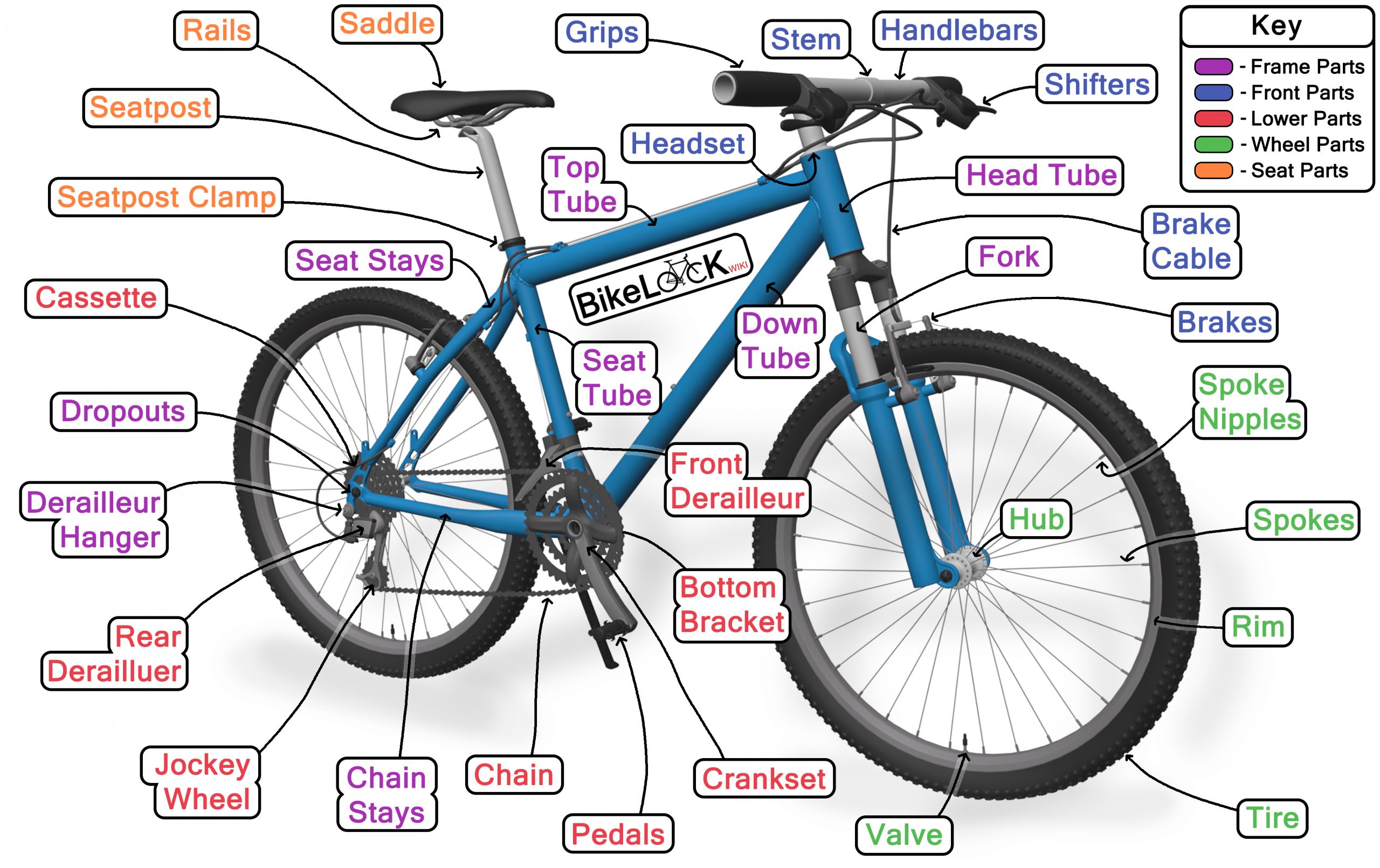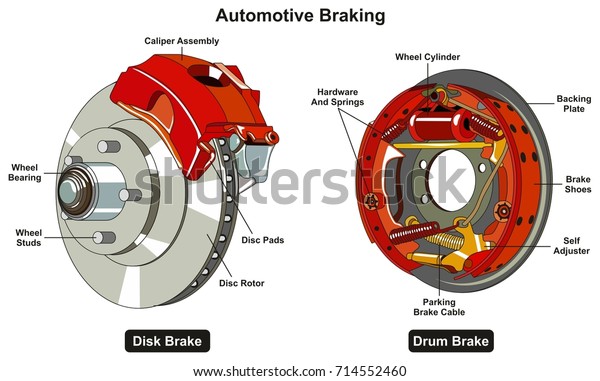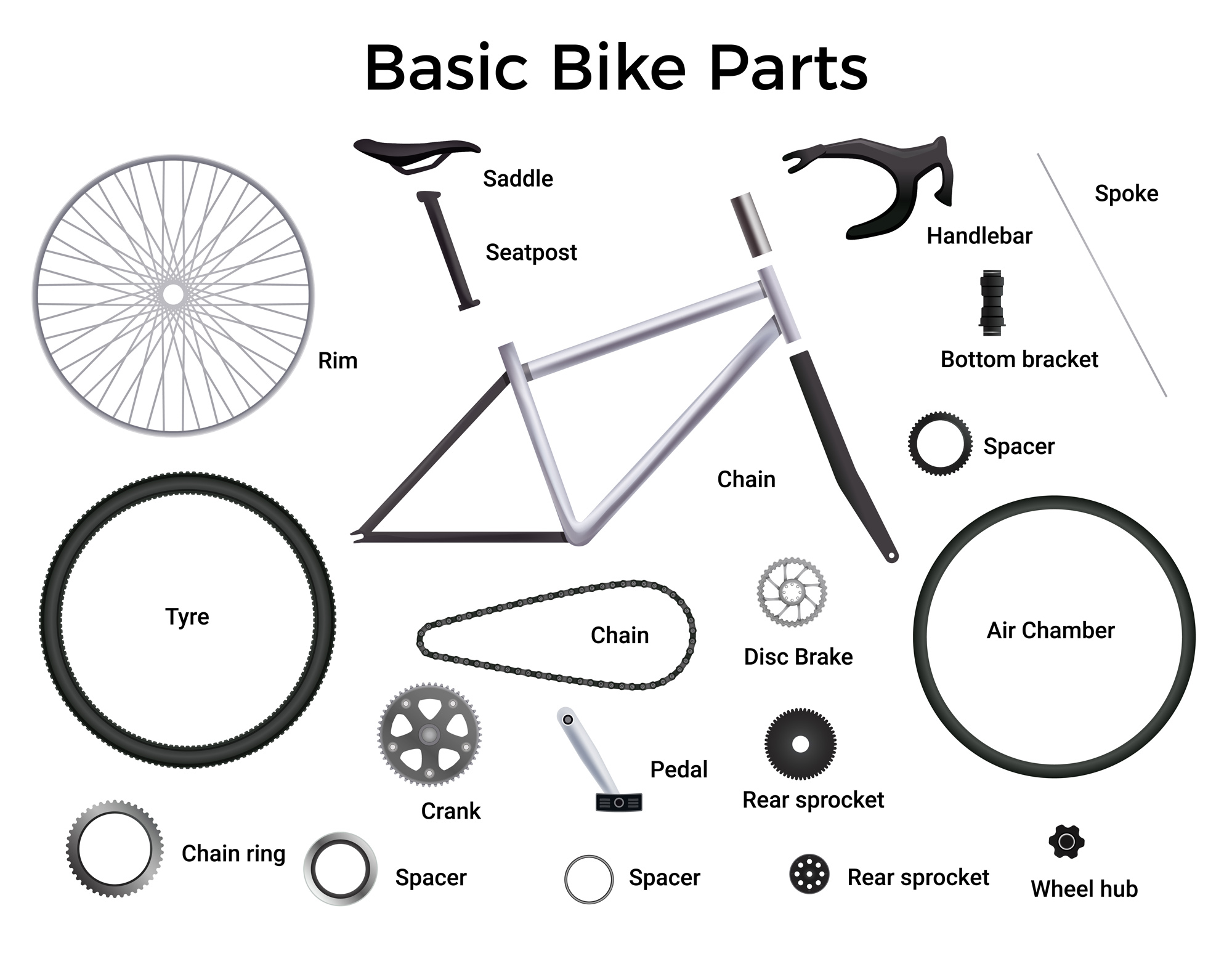Mastering the Art of Road Cycling: A Comprehensive Guide
Unlocking the Secrets of a Smooth Ride
When it comes to road cycling, understanding the various parts of the road bike is crucial for optimal performance and safety. A well-maintained bike can make all the difference in achieving a smooth ride, whether you’re a seasoned pro or a beginner. The parts of the road bike work in harmony to provide a comfortable, efficient, and enjoyable cycling experience. From the frame to the wheels, gears, brakes, handlebars, saddle, and pedals, each component plays a vital role in the overall performance of the bike. By grasping the intricacies of each part, cyclists can fine-tune their bike to suit their riding style, terrain, and personal preferences. In this comprehensive guide, we’ll delve into the world of road bike components, exploring how they interact and impact your ride.
Understanding the Frame: The Backbone of Your Bike
The frame is the foundation of a road bike, providing the structural integrity and support for the entire machine. It’s the part of the road bike that sets the tone for the overall riding experience, influencing factors such as comfort, performance, and safety. When it comes to frames, cyclists have a wide range of options to choose from, each with its unique characteristics, advantages, and disadvantages. Frames can be made from various materials, including carbon fiber, aluminum, steel, and titanium, each offering distinct benefits in terms of weight, strength, and durability. The shape and size of the frame also play a crucial role, with different geometries and dimensions suited to specific riding styles and preferences. For instance, a compact frame may be ideal for smaller riders or those who prefer a more agile bike, while a larger frame may be better suited for taller riders or those who prioritize comfort and stability. By understanding the different types of frames and their characteristics, cyclists can make informed decisions when selecting a bike that meets their specific needs and preferences.
Wheels and Tires: The Dynamic Duo of Speed and Control
When it comes to road cycling, wheels and tires are the unsung heroes of speed and control. As crucial parts of the road bike, they play a vital role in determining the bike’s overall performance, handling, and safety. The right wheels and tires can make a significant difference in a cyclist’s ride, providing a smoother, faster, and more comfortable experience. Wheels come in various sizes, materials, and designs, each suited to specific riding styles and terrains. For instance, lightweight wheels with a high rim profile may be ideal for racing and time trials, while heavier, more durable wheels may be better suited for commuting and touring. Tires, on the other hand, vary in terms of tread pattern, width, and material, affecting factors such as traction, rolling resistance, and puncture resistance. By understanding the different types of wheels and tires available, cyclists can make informed decisions when selecting the perfect combination for their bike, riding style, and terrain. This knowledge can also help cyclists optimize their bike’s performance, improve their overall cycling experience, and reduce the risk of accidents and injuries.
How to Choose the Perfect Gear System for Your Ride
When it comes to road cycling, the gear system is a critical component that can make or break a rider’s performance. As a vital part of the road bike, the gear system plays a significant role in determining the bike’s overall efficiency, comfort, and speed. With various types of gear systems available, including derailleur and internal gear hubs, cyclists need to understand the differences between them to make an informed decision. Derailleur gear systems, for instance, offer a wide range of gear options and are ideal for racing and high-performance riding. Internal gear hubs, on the other hand, provide a more low-maintenance and reliable option, making them suitable for commuting and touring. By understanding the different types of gear systems and their characteristics, cyclists can choose the perfect one for their cycling style, terrain, and riding goals. This knowledge can also help cyclists optimize their bike’s performance, improve their overall cycling experience, and reduce the risk of mechanical failures and injuries. Additionally, understanding the parts of the road bike, including the gear system, can help cyclists develop a more intimate connection with their bike, leading to a more enjoyable and rewarding ride.
Braking Systems: The Unsung Heroes of Road Safety
When it comes to road cycling, braking systems are often overlooked, yet they play a critical role in ensuring the safety of riders. As a vital part of the road bike, braking systems are responsible for slowing down or stopping the bike, and their proper functioning can mean the difference between a safe ride and a potentially dangerous situation. There are two main types of braking systems: rim brakes and disc brakes. Rim brakes are the traditional type, which use brake pads to grip the rim of the wheel, while disc brakes use a rotor attached to the wheel hub and a caliper to slow down the bike. Both types have their advantages and disadvantages, and understanding their differences is crucial in choosing the right braking system for your bike. For instance, rim brakes are generally lighter and more aerodynamic, making them ideal for racing and high-performance riding, while disc brakes provide more consistent and reliable braking, making them suitable for commuting and touring. Additionally, proper maintenance and adjustment of the braking system are essential to ensure optimal performance and safety. By understanding the different types of braking systems and their characteristics, cyclists can make informed decisions when selecting and maintaining their braking system, ultimately leading to a safer and more enjoyable ride. Furthermore, understanding the parts of the road bike, including the braking system, can help cyclists develop a more intimate connection with their bike, leading to a more confident and controlled ride.
The Handlebar and Stem: The Command Center of Your Bike
The handlebar and stem are often overlooked components of the road bike, yet they play a crucial role in determining the bike’s overall performance, comfort, and control. As a vital part of the road bike, the handlebar and stem serve as the command center, connecting the rider to the bike and providing a platform for steering, braking, and shifting. The handlebar’s shape, size, and material can significantly impact the bike’s aerodynamics, comfort, and control. For instance, a compact handlebar can improve aerodynamics, while a ergonomic handlebar can reduce fatigue and discomfort. The stem, on the other hand, affects the bike’s handling and stability, with a longer stem providing more stability and a shorter stem offering more agility. Understanding the different types of handlebars and stems, including their materials, shapes, and sizes, is essential in choosing the right ones for your bike. Additionally, proper installation and adjustment of the handlebar and stem are critical to ensure optimal performance and comfort. By understanding the parts of the road bike, including the handlebar and stem, cyclists can make informed decisions when selecting and customizing their bike, ultimately leading to a more enjoyable and efficient ride. Furthermore, a well-fitting handlebar and stem can improve the rider’s overall cycling experience, reducing fatigue and discomfort, and increasing confidence and control.
Saddles and Seatposts: The Comfort Zone of Road Cycling
Saddles and seatposts are often overlooked components of the road bike, yet they play a crucial role in determining the bike’s overall comfort and performance. As a vital part of the road bike, saddles and seatposts provide the interface between the rider and the bike, affecting the rider’s comfort, posture, and pedaling efficiency. The saddle’s shape, size, and material can significantly impact the rider’s comfort, with a well-fitting saddle reducing pressure points and discomfort. The seatpost, on the other hand, affects the bike’s overall performance, with a lightweight seatpost improving the bike’s power-to-weight ratio and a adjustable seatpost providing flexibility in fitting. Understanding the different types of saddles and seatposts, including their materials, shapes, and sizes, is essential in choosing the right ones for your body type and riding style. Additionally, proper installation and adjustment of the saddle and seatpost are critical to ensure optimal comfort and performance. By understanding the parts of the road bike, including the saddle and seatpost, cyclists can make informed decisions when selecting and customizing their bike, ultimately leading to a more comfortable and efficient ride. Furthermore, a well-fitting saddle and seatpost can improve the rider’s overall cycling experience, reducing fatigue and discomfort, and increasing confidence and control.
Pedals and Cleats: The Connection Between You and Your Bike
Pedals and cleats are a crucial part of the road bike, serving as the connection between the rider and the bike. They play a vital role in determining the bike’s overall efficiency, comfort, and safety. The pedals’ shape, size, and material can significantly impact the rider’s comfort and pedaling efficiency, with a well-fitting pedal reducing pressure points and discomfort. The cleats, on the other hand, affect the bike’s overall safety, with a secure cleat system providing confidence and control. Understanding the different types of pedals and cleats, including their materials, shapes, and sizes, is essential in choosing the right ones for your cycling needs. Additionally, proper installation and adjustment of the pedals and cleats are critical to ensure optimal performance and safety. By understanding the parts of the road bike, including the pedals and cleats, cyclists can make informed decisions when selecting and customizing their bike, ultimately leading to a more efficient and comfortable ride. Furthermore, a well-fitting pedal and cleat system can improve the rider’s overall cycling experience, reducing fatigue and discomfort, and increasing confidence and control. When selecting pedals and cleats, cyclists should consider factors such as their riding style, terrain, and personal preferences to ensure a comfortable and efficient ride. By doing so, cyclists can unlock the full potential of their road bike and take their cycling experience to the next level.








